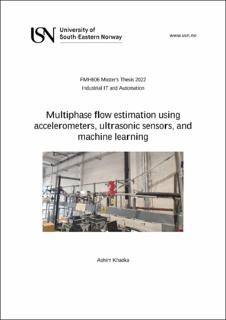| dc.description.abstract | The new sensors, accelerometers, and ultrasonic sensors were installed in the existing multimodal sensor suite used in the multiphase flow in the process hall in Campus Porsgrunn of USN. Multiphase flow experiments were conducted, and measurements were recorded using different data acquisition systems.
The collected measurements were preprocessed and analyzed to extract the useful features from the raw signals. To classify the flow regimes, the Classification Learner application was used, and the results from different models were compared based on their accuracies. The feature selection technique was implemented to evaluate the importance of each feature. Then, the models were trained with the new features. As a result, the accuracy of the Ensemble model with Bagged Trees was increased from 94.2 to 97.1%. The Random Forest and Decision Trees techniques were also implemented to classify the flow regimes. The flow rates of oil, water, and gas were successfully predicted using the Regression Learner tool. However, the measurements from ultrasonic sensors were not satisfactory due to technical problems related to wedge. In this case, the new wedge was designed and manufactured for the experiment but was unable to implement and collect measurements for this work due to time constraints. | |
